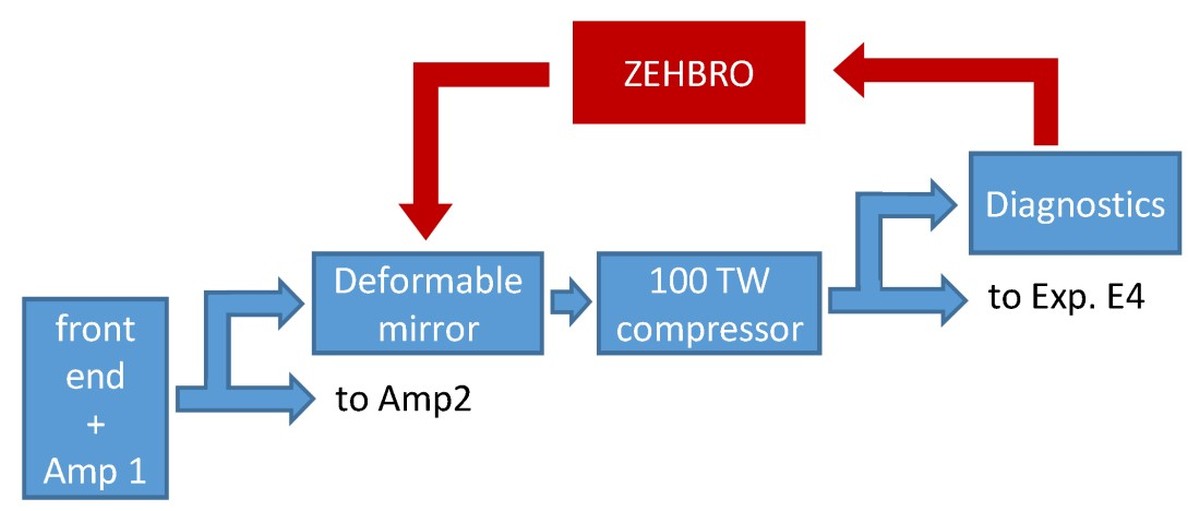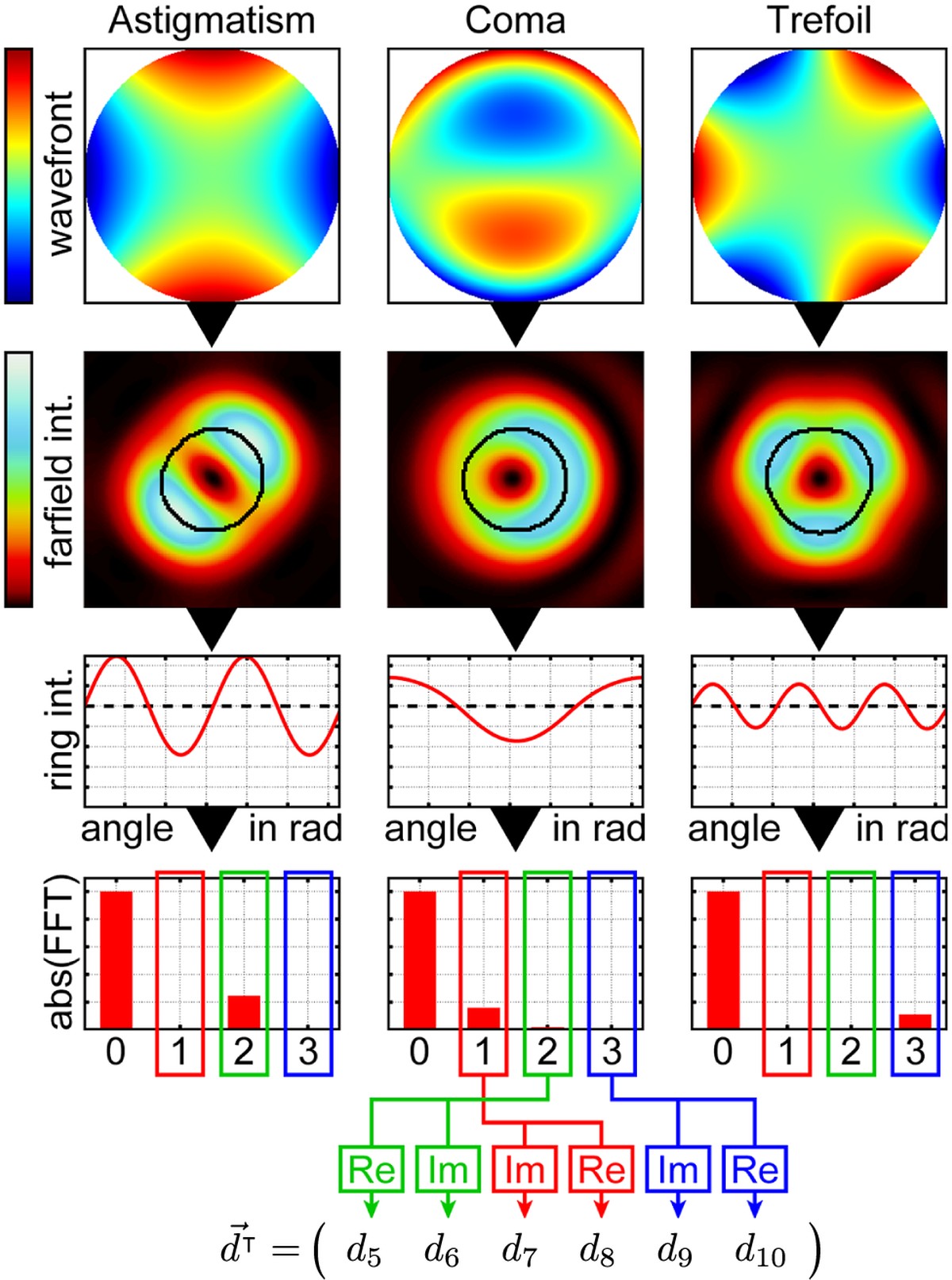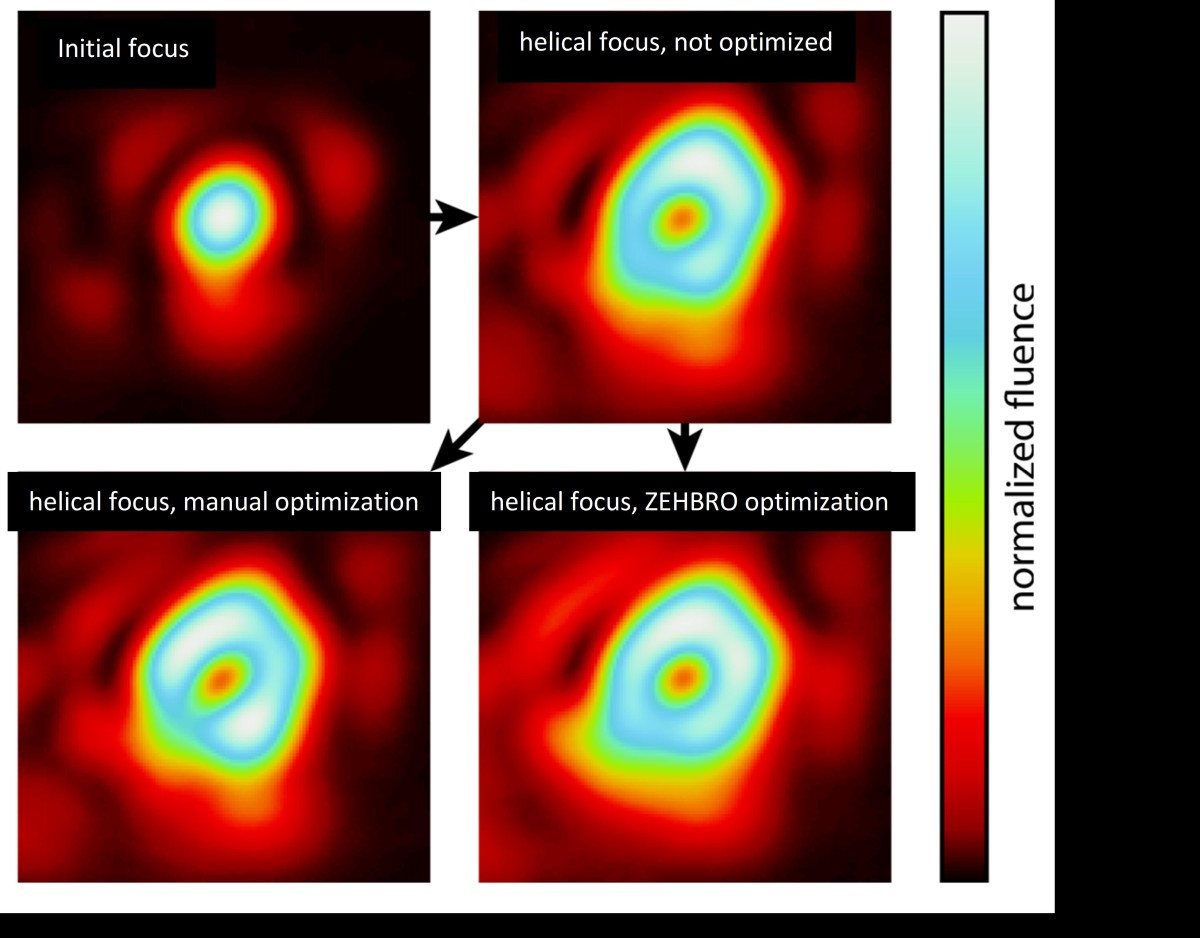J. B. Ohland, D. Posor, U. Eisenbarth, V. Iancu, R. Ungureanu, D. Ursescu and V. Bagnoud [ https://www.cambridge.org/core/journals/high-power-laser-science-and-engineering/article/zernikecoefficient-extraction-via-helical-beam-reconstruction-for-optimization-zehbro-in-the-far-field/B8BA8ED4DE7E1B112A86354F91628B13 ]
The spatial distribution of beams with orbital angular momentum in the far field is known to be extremely sensitive to angular aberrations, such as astigmatism, coma and trefoil. This poses a challenge for conventional beam optimization strategies when a homogeneous ring intensity is required for an application. A novel approach for estimating the Zernike coefficients of low-order angular aberrations in the near field, based solely on the analysis of the ring deformations in the far field, was developed by the collaborators at GSI in Germany. The algorithm was successfully implemented at the Extreme Light Infrastructure - Nuclear Physics facility, in the first user experimental campaign, having Daniel Ursescu from ELI-NP as PI, making possible focal spot intensity optimization and, in the future, the use of vortex pulses at high repetition rate for particle acceleration experiments.

Fig.1 - Experimental setup at the ELI-NP facility for the validation of ZEHBRO.

Fig.2 - Simulated examples for the ring characterization in ZEHBRO for a Zernike coefficient of λ/20 (according to the Zernike normalization mentioned in the text) of astigmatism (left), coma (center) and trefoil (right). The WF map is shown in the top row and the corresponding FF below. The black line indicates the position for the ring intensity extraction, which is shown in the third row. The last row shows the absolute values of the first four FFT coefficients of the ring intensity, which can be rearranged to the descriptor vector (bottom).



